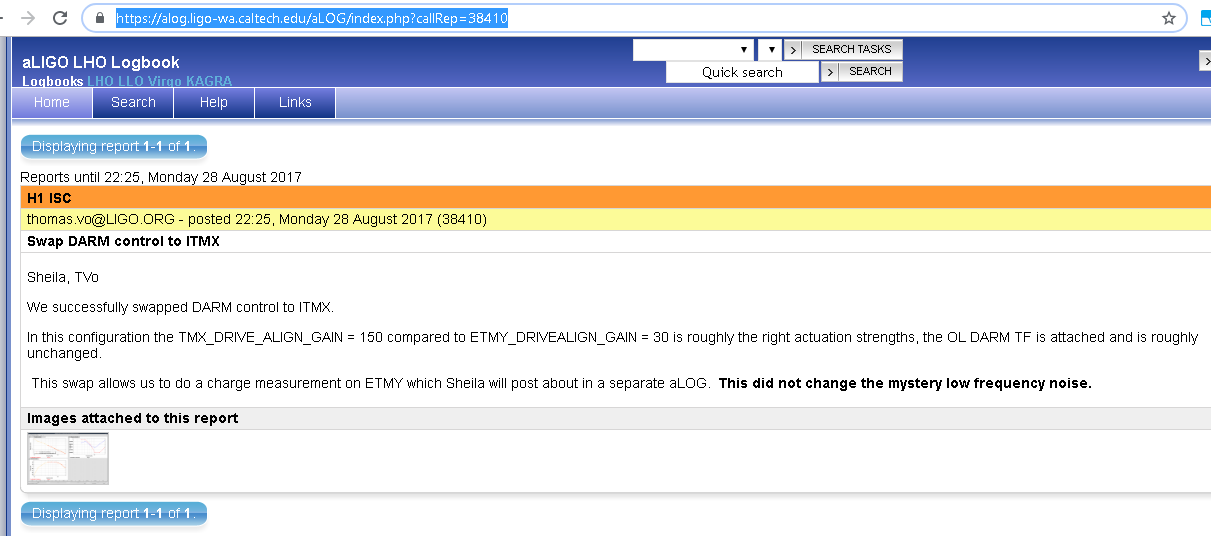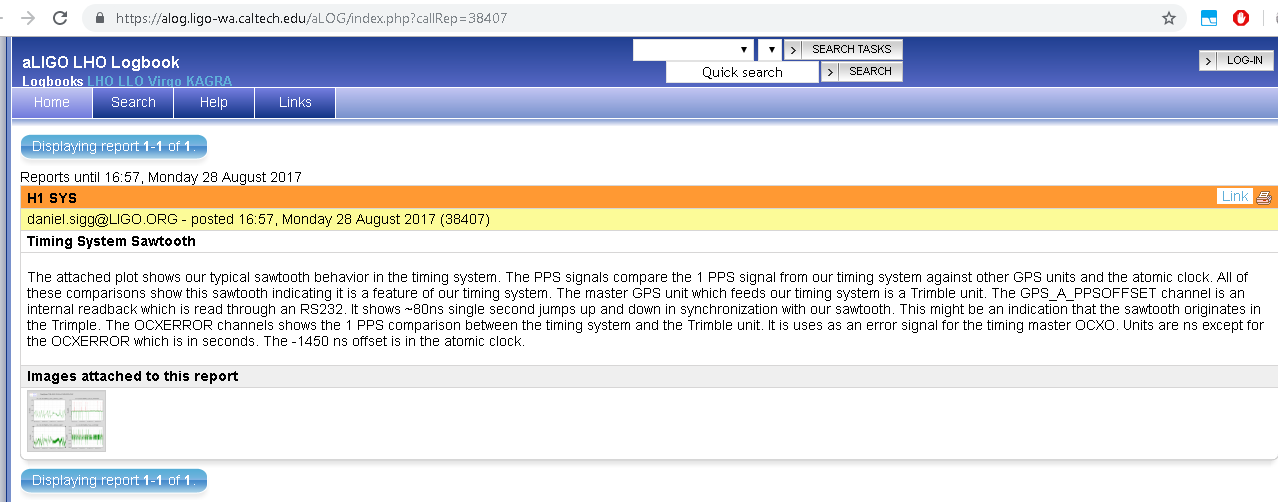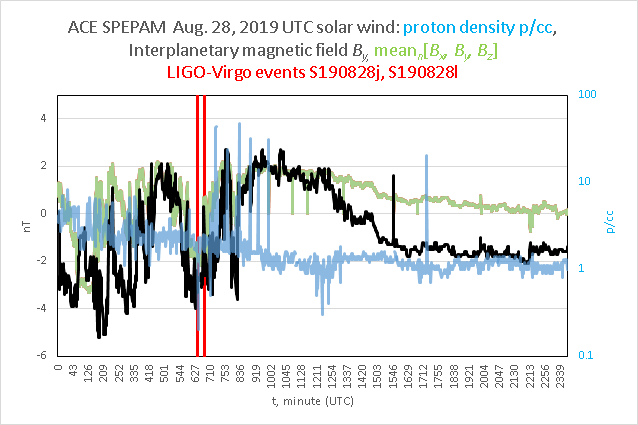



tr2. F-region quasiperiodic ripples median periodicity ~22 min https://nature.com/articles/s41598-019-57201-4… 3. LIGO sawtooth "mystery noise" duration 21-22 min 4. #S190828j-#S190828l t0 interval ~21 min




First principles begin at the level of reference and should not be assumed to be independent of a framework for real analysis. Propagation of artifacts due to the use of downsampling, decimation, and subsequent wavelet transformation have become themselves nondegenerate components for LIGO-Virgo event parameter estimation, and as such the path of analysis has become conflated with data due to efforts to discriminate undesired ordered spectral content from "signal," which is highly nonstationary - signal always relative to the structure of noise - and as the nature of the strain signal is entirely broadband/quasiperiodic/scale-invariant, unphysically-isolated from a sea of identical tearing-transverse-converging modes through template fitting upon destruction of phase information, from where properties of the sources and signal are then estimated. If random noise never coincides with an LVC trigger, yet no attempt is made to assess the reasons for this, we know that it is at least implicit the reality of this correlated noise cannot be explained as a consequence of GW arrival, since this non-GW content is sufficiently strong to obscure any sub-threshold phase components unless we modify extended GR or are detecting GW sources of much different character than believed.
If LVC used an empirical-falsificationist approach, we would at the very least have publicized - with GW "discoveries," the ever-clearer evidence, purely from retractions (no self-incrimination implied necessarily), that solar-terrestrial coupling extends conserved scale-invariant quantum mechanical normal modes into an entangled n-th order co-rotating/inertial topological network instead of some self-aggrandizing teenage fishing phenomenology exclusively. But there cannot be any dichotomy established because the retraction population has the same properties (as a population) and foreground conditions as non-retractions, which are unique to event windows, not exceeding 2 per day (more QM-like system determinism).
LIGO may be correct if distant events control the statistics of orbits and space weather and can still reveal their parameters without conditioning by foreground, and has presented the first dimensional analytic basis for the hypothesis that the Earth-IMF-magnetosphere coupling becomes correlated to the galactic plane
event arrival order:arrival time correspondences to geometric lag intervals were from the the last 5 events with respect to UTC run day, S200224ca 2020-02-24 22:22:50 UTC the fifth latest of 79 total O3 superevents:
S200224ca 2020-02-24 22:22:50 UTC
((60/(79/24))=18.2278481013 min
Max 79 daily publicized triggers, assuming this can be idealized as an upper limit, conveniently have a regular interval that recurs in fractional form within analytical dimensional bounds
(6,378km*40, near-Earth magnetotail reconnection region during IMF-dayside reconnection=20 to 30 equatorial RE*2)/((60/(79/24))*60)=galactic rotation speed (232 km/s)
Typical reconnection in magnetotail at ~100RE https://agupubs.onlinelibrary.wiley.com/doi/full/10.1002/2016JA023586
((6,378*200)/((60/((84/24))*60))/5=248.033333333
Selecting a period that fits the arrival order:time relation I found convergence using all the same terms, but chose 22.66 hours, which is the optimal window preserving 79/period, but subtracting (not disregarding) the remainder of the UTC day beyond t0+optimal interval, we have
22:23+17 minutes=22.66 UTC
((60/(79/22.66))= 17.2101265823 minutes, so
(6,378km*40)/((60/(79/22.66))*60)=247.063842 km/s
https://photos.app.goo.gl/aVuReezJzBEzbaAc9
Further, since the 79 value arrived with ~1:37 remaining in the 24-hour period, I reduced the period to distribute the intervals more realistically; conversely, adding 5 events (N=(79+5= 84) filled the 24 hour period with the optimal interval: 5 again – interesting in terms of recurring-cyclical properties of the intervals I mention as evidence of long-range magnetospheric driving
Interestingly, the interval between azimuthal V and V is 16 km/s for 248-232, and 15 for 247-232. We know that 16 tends to be a recurring motif and 15 has become prominent elsewhere in LVC error/sawtooth events:
https://photos.app.goo.gl/jy1rR9DqU4onRSHa7
https://photos.app.goo.gl/WCEMU9cwEHApkoV88
The mean annual number of sawtooth events for solar cycle 23 has two count values given the length of the cycle considered, which was extended in Cai-Clauer 2013 (https://agupubs.onlinelibrary.wiley.com/doi/full/10.1002/2013JA018819) from their prior count (2009: https://agupubs.onlinelibrary.wiley.com/doi/full/10.1029/2008ja013764). Those two values, 10.5 and 11.1, produce the ratio 1.057143, which is very close to
mean[(t/2)/t(AU'|c), N=3]=1.0647
max/min, t/2; min/max=1.0633
from the LIGO-detected magnetotail-solar interval relation
and further,
solar LSR motion offset (U⊙) is ∼ 11.1 k/s
https://arxiv.org/pdf/1207.3079.pdf
179.6 minutes average sawtooth event period;
for 11.1 sawtooth events,
179.6/11.1=16.18018, which almost perfectly equals the golden ratio*10.
and for 179.6 minutes and 10.5 sawtooth events, 179.6/10.5=17.1047619, which is very close to the numerical value for the minimal interval/maximum cycle density of 17.14 minutes.
(6,378km*40)/((60/(84/24))*60)=248.033333 km/s
((60/(84/24))=17.1428571429 minutes
(cf. S190901ap 2019-09-01 23:31:24 UTC
60/(42/24)=34.2857142857 min, 60/(42/24)/2= 17.1428571429 min)
“It turns out that the Sun’s velocity as it whips around the galaxy is about 246 km/s, a result which is similar to that found by the Gravity Collaboration et al. team in 2019, which measured it at approximately 247 km/s. In addition to this, it was found that the distance between the Sun and the centre of the milky way is about 8.12 kiloparsecs (which translates to about 26,484 light-years).”
https://spaceaustralia.com/feature/supermassive-black-hole-ejects-hyper-velocity-star
”V⊙is constrained to be 246.1 ± 5.3 km s−1. Those constraints also do not depend significantly on whether we use spectro-photometric or photometric only distances as we slice the posterior shown on the left panel of the figure across the distance degeneracy. The V⊙measurement is competitive with and entirely independent from the 247.4 ± 1.4 km s−1 constraint from Gravity Collaboration et al. (2019).”
https://arxiv.org/pdf/1907.11725.pdf
“…solar Local Standard of Rest (LSR) values from Sch¨onrich et al. (2010) and assuming a total solar azimuthal velocity according to the IAU recommendations at Vg,⊙ = 232 km s−1 .”
“ I set R0 = 8.2 kpc, and the value for Vg,⊙ accordingly to 248.5 km s−1 .”
https://arxiv.org/pdf/1207.3079.pdf
S190901ap 2019-09-01 23:31:24 UTC
60/(42/24)=34.2857142857 min
60/(42/24)/2= 17.1428571429 min
S190915ak 2019-09-15 23:57:25 UTC
(60/(37/24))= 38.9189189189 min
(60/(37/24))/2=19.4594594595 min
S191110af 2019-11-10 23:10:59 UTC (retracted burst transient I had established was identical to the heliopause-magnetosphere lower hybrid resonance frequency)
60/(32/24)=45
60/(32/24)/(sqrt2+1)=18.6396103068 min
Trigger –ag (32+1) at 43.6363636364 better fit (next trigger expected at ~23:55 UTC)
(60/(33/24))/(sqrt2+1)= 18.0747736308 min
S191215w 2019-12-15 22:31:17 UTC
60/(23/24)= 62.6086956522 min
60/(23/24)/(sqrt2*(sqrt2+1))= 18.3376623953 min
I've mentioned that LIGO-Virgo are an example of systematically pseudo-entangled (ontologically-committed) feedback loop between self-perpetuating circularity and the "complicit" Earth from which it is establishing its ever-updated prior probabilities, reinforcing the conflation of terrestrial mechanisms and celestial transients (since predictions/quotas will be "fulfilled,' while congesting any account of operation with self-congratulatory phrasing and copious imposition of certain descriptors conditioned purely by desires).
http://www.ams.org/journals/notices/201707/rnoti-p693.pdf with unequal masses, an approximation from a one-body model is near exactly the two-bodied solution until the coalescence phase, where multipole information would be found in higher order moments. I honestly don't know if a scenario would be forbidden in GR, although I'm not one to argue from theoretical propriety. Sorry I can't be informative on that question.
I went further with the interval density:systematic error analysis from last night. Check this shit out:
https://photos.app.goo.gl/ytV9QWNK6CKadEgc9
Nightside reconnection lag as mapped to the interval density for LIGO triggers - related to the send-return shortest propagation distance - turned out to be related to a dual as the total time of flight for an Earth-Sun send-return period, so the ratio between the average of the three intervals and the ordinary speed of light propagation for 1 AU*2 is the same as the ratio between the upper and lower interval lengths:velocities that describe the near-determinstic magnetotail path length at near-earth reconnection stage as a rigid mode that protects bound scaling restricted to a light cone-like minimum energy surface - and these velocities are the same as solar/galactic velocities, as well as the IAU (International Astronomical Union) azimuthal velocity. Most magnetospheric mode interactions, including co-rotating interaction regions between slow/fast streams (where all ligo event trigger times may be reproduced), involve sets of recursive duals that include extremes that have reciprocal/complex values on the unit sphere/circle/column, representing almost a kind of eigen-expression of bulk-boundary correspondence moment at a long-range bifurcation with global stable points. LIGO events become instanton-like solutions to geometric disequilbrium between counterpropagating interfaces.
Typical reconnection in magnetotail at ~100RE actually preserves another 5 groupoid (scaling factor as order in a renormaliation flow as a property of global bifurcation?), which you find in the latest arrival rank of the S200224ca (5th latest) and the solution to the dimensional interval fitting for 24 hours (5 events filled the 24-hour period from ToA, preserving optimal interval from ToA and OoA relation in S200224ca). The contraction of the magnetotail from typical to near earth modes is integer-determined:
((6,378*200)/((60/((84/24))*60))/5=248.033333333
https://agupubs.onlinelibrary.wiley.com/doi/full/10.1002/2016JA023586
I had a hunch that the 247, 232 km/s relation should preserve a geometric parameter that also explains the elegance of coupling/decoupling in a galaxy-scale system, beyond magnetosphere-Earth, Sun-Earth, and heliopause-sun-earth components. The discrepancy is quite interesting in terms of field components and their monodromy, and indicates that even electromagnetic interactions in the solar system produce a modulus of their eigenvalues universal with the scaled-up system. The interstellar magnetic field inertial action with long-range rest relation coupling with an extended state during local field line disarticulation would be interacting with the magnetosphere and sun-earth connective feedback velocity components of various masses (massless).
No comments:
Post a Comment